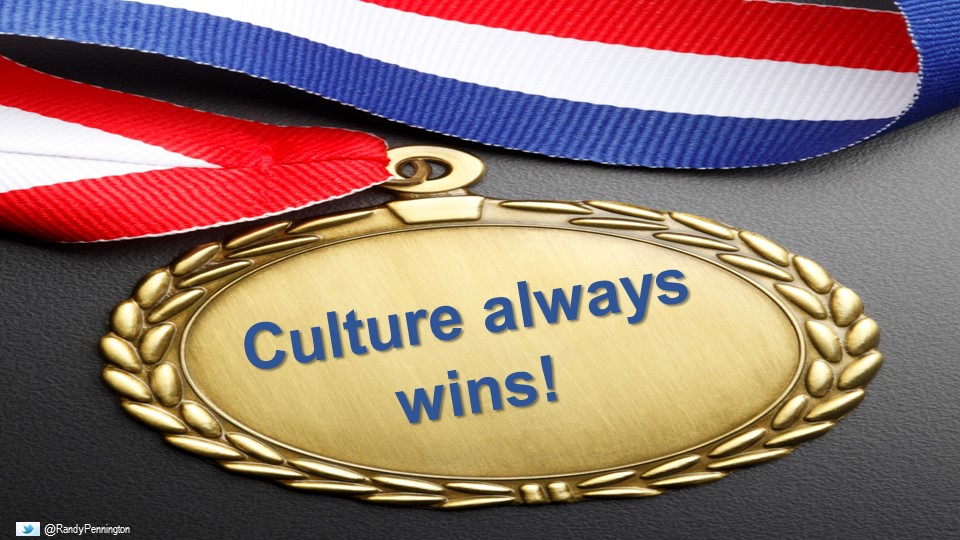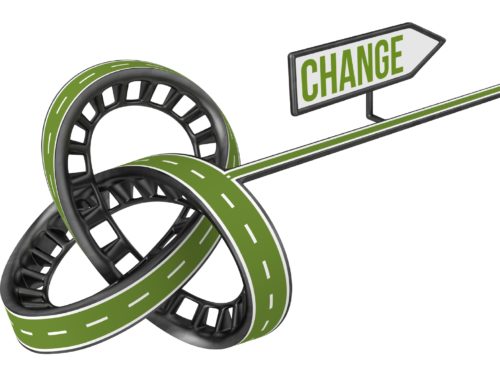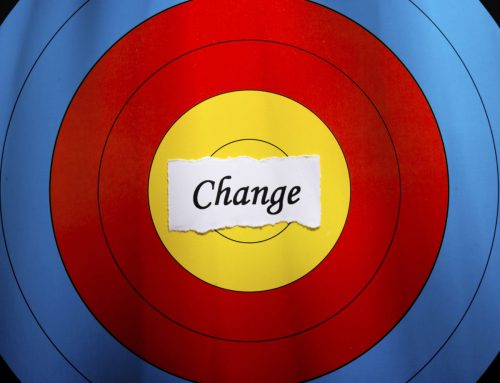Ted Bauer was nice to quote me in an article about corporate culture a few weeks ago. If you haven’t read or don’t follow Ted, check him out. He has interesting ideas on the state of organizational culture these days.
The quote was:
The idea of corporate culture has been hijacked by well-meaning people who don’t have a clue about building a successful business. Unfortunately, that move has been enabled by CEOs who use parties and perks as a pacifier to keep the kids placated. The result is people confusing an excellent culture focused exclusively on making employees happy with a culture of excellence focused on making the business successful.
Ted also mentioned a piece by Shane Boyd that referenced this article by Geoff Marlow about the “toxic myth of culture as shared values.”
Like Geoff Marlow, I’ve been helping organizations create cultures that deliver positive results for over 35 years. I agree with him 100 percent that publicizing your values on coffee mugs, banners, posters, computer screens, and backs of business cards almost never results in those values being shared. There are too many leaders and organizations that don’t walk their talk.
So how are important are shared values?
Shared values are an important part of the culture equation, but they aren’t everything.
People will tell you that their core values drive each of their decisions, but it isn’t that simple.
Honesty, as an example, is often listed as a core value. People espouse it for themselves and say they want it from others. That often isn’t true.
Would you lie to save the life of your partner or child? Have you ever told someone that their new haircut looks amazing when it doesn’t? Have you ever raved of your mother-in-law’s meatloaf even though it is terrible?
Values collide, and we make choices. The clear choices between right and wrong are easiest. The choices between right and also right or wrong and less wrong are more complicated.
The same dynamic applies across your organization, too. The “toxic myth of shared values” comes down to the fact that the values are not shared after all, and if they are, there is no guarantee that they are shared with the same intensity or understanding.
For you, integrity might be number one. I might follow the wisdom of British statesman Henry Taylor that “falsehood ceases to be falsehood when it is understood on all sides that the truth is not expected to be spoken.”
The same rationalize can be used for values such as quality, service, accountability, respect, the importance of employees, or any other noble attribute you find on a company’s web site.
Culture is about much more than shared values
About 30 years ago I concluded that an organization’s culture is basically its habits displayed over time that define what it truly believes about people, performance, and professionalism. The model for how a culture develops is deceptively simple.
- The choices made (individually and collectively) within the organization drives action.
- Action over time — when reinforced (positively or negatively) or allowed (intentionally or through abdication) creates habits.
- Habits — not words on the wall — define the organization’s culture.
Simple, huh? Like most things, success depends on execution.
Values influence our choices, but so do our collective beliefs, assumptions, expectations, and purpose. The conflicts that naturally occur between those can create chaos in the culture — like the C-suite executive of a former client who stated that he valued empowerment and initiative from his team but believed that mot of his employees couldn’t be trusted because he valued meeting customer expectations without mistakes more than empowerment.
I know. This executive lacked a true understanding of empowerment, and he wasn’t a great job of developing his team. The tension in his culture still came down to the disconnect between values, beliefs, assumptions, and expectations.
Turning Intention into Action and Habit
If culture is our habits displayed over time, intentionality in translating choice into action is crucial.
Every organization has levers they can pull and push to reinforce or redirect behavior, thinking, communication, and performance. The “formal” ones include hiring, promotion, recognition, training and development, accountability, and termination of employment.
The informal levers are just as — if not more — important.
How do the informal communication channels work? Are there favorites? Do team members stab each other in the back? What is ignored or tolerated? Is there a shadow organization that operates separately from what is publicly portrayed?
We Check Them Into Everything
One of my earliest culture change clients hired a well-known college athletics coach to speak to their managers about creating a disciplined culture. The coach described his process this way:
When a student athlete arrives on campus, we impose a sense of discipline. We check them into practice. We make sure they wear the correct equipment. We check them into the dorm at night. We make sure they attend classes and complete assignments. Over time, that imposed discipline becomes self-discipline, and when they leave us, we have taught them the value of having discipline (something they are not something they do) in their lives.
It is that way with culture, too.
Covering the walls with values, assumptions, beliefs, expectations, and purpose don’t ensure commitment — or even compliance — to them. Intentional action that becomes a habit is the key.
The Culture Always Wins
Peter Drucker is credited with saying, “Culture eats strategy for breakfast.”
In today’s world, culture eats everything for breakfast, lunch, dinner, and midnight snack. But we’re not talking about the hijacked cultures that are more concerned about parties and perks than profits.
Working in a fun, rewarding environment is … well …fun and rewarding. Fun and rewarding without positive results isn’t a successful organization. It is a party.
Many of the cynical comments I read about “corporate culture” are deserved. That doesn’t diminish the importance of culture in your organization’s success.
It is impossible for an organization to not have a culture. The only questions are (a) are we being intentional to align the culture; and (b) will the culture we have sustain and equip us for the future?
Stop allowing your culture to by hijacked by well-meaning people who don’t have a clue about building a successful business. Don’t settle for an excellent culture. Build a culture of excellence instead. Your customers, employees, and bank account will thank you.
Randy Pennington helps leaders and organizations deliver positive results in a world of uncertainty and change. He is an award-winning author, speaker, and self-described organizational nerd. e. To learn more or to engage Randy for your organization, visit www.penningtongroup.com, email info@penningtongroup.com, or call 972–980–9857 (U.S.).
This article first appeared on the Medium platform.





